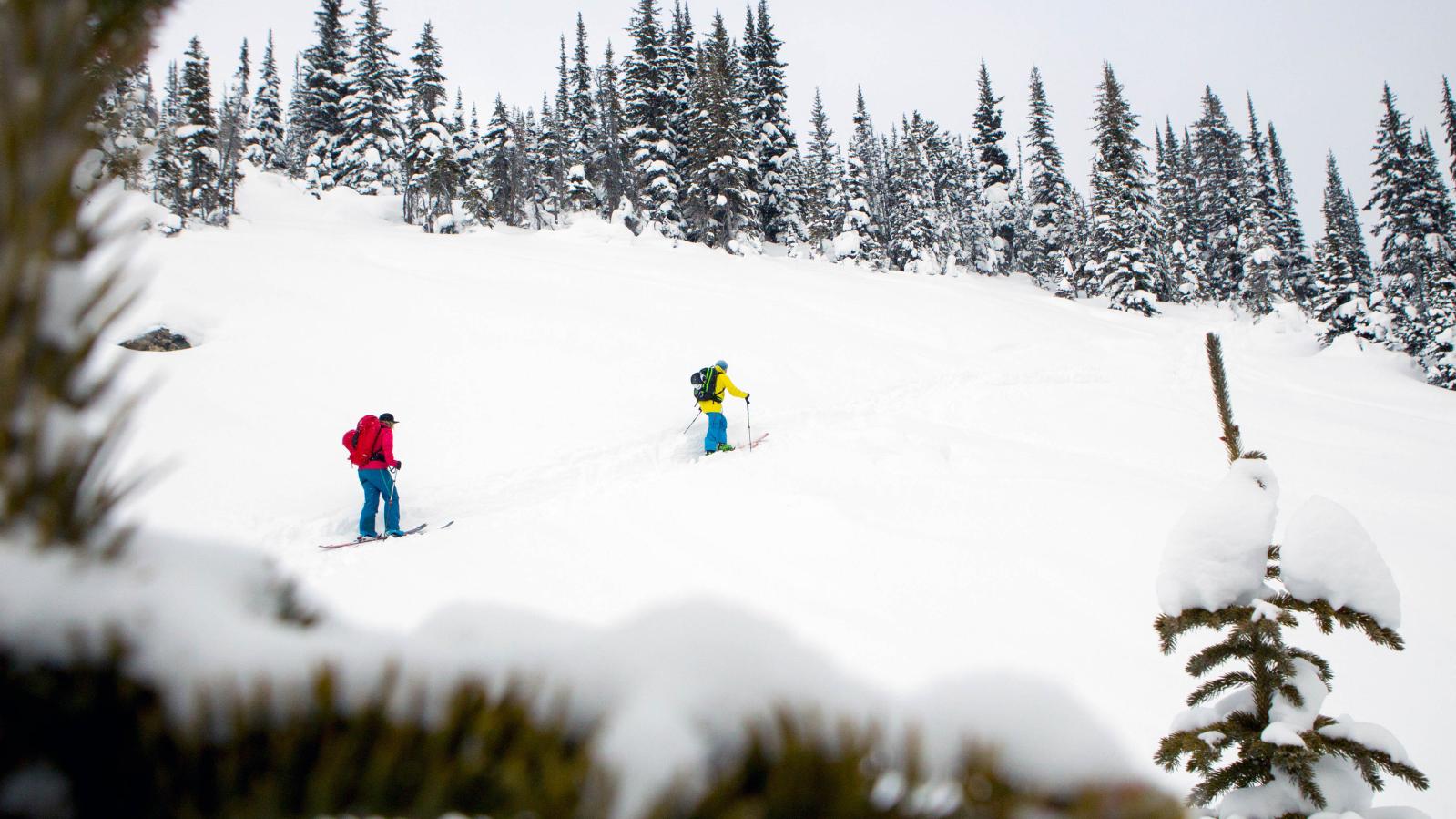
Rogers Pass
Rogers Pass
Golden is located close to Rogers Pass, which is famous for its incredible ski touring terrain and annual snowfall in excess of 10 meters. This makes Golden the perfect destination for the serious skier to explore from.
Roger's Pass is also home to the world's largest mobile avalanche control program. This means that explosive artillery fire is regularly used on mountain slopes in Rogers Pass to protect highway and railway traffic from natural avalanches. The Winter Permit System in Rogers Pass separates skiers from these explosives and resulting avalanches.
What is the Winter Permit System?
Learn it. Get your permit.
All of the mountain slopes that face the Trans-Canada Highway and railway corridor in Rogers Pass are part of the Winter Permit System. Sometimes areas of this ski-touring terrain can be closed for explosive avalanche control. You need to know where you can ski and ride to be safe from artillery fire.
Certain areas of Rogers Pass are restricted or prohibited. Learn about these areas here.
The Winter Permit System is in effect to manage winter backcountry access so that it doesn’t conflict with the highway avalanche control program. You are responsible for your own safety in the backcountry. Anyone traveling into the backcountry must have avalanche training and appropriate safety equipment. It is critical that anyone venturing into the backcountry in Rogers Pass be aware of and comply with the area’s Winter Permit System, for your safety and everyone else playing or travelling through the pass.
Rogers Pass checklist
Before you ski Rogers Pass, you must:
- Get your Winter Permit.
- Have a Winter Permit for every member of your group. Digital permits are accepted if you are unable to print a copy.
- Display a legible printed Winter Parking Permit on the dashboard of the vehicle(s) you will be using.
- Check which areas are open daily on the Rogers Pass Backcountry Access interactive map.
- Get a national park pass for every member of your group. Available at the Rogers Pass Discovery Centre.
- Understand the risks of backcountry recreation, how to travel in avalanche terrain, and how to practice self-rescue techniques.
- Have an avalanche transceiver, shovel, and probe for every member of the group.
- Check today's Avalanche Bulletin to determine the current conditions.
- Carefully plan your route using online resources, maps, guidebooks, and information from Parks Canada.
- Know before you go. Check DriveBC.ca for highway conditions and updates.
How do I get a Winter Permit?
Annual Winter Permits are strongly encouraged. If you don’t have enough time to acquire an annual Winter Permit, options for skiing at Rogers Pass are:
- Ski in an unrestricted area at Rogers Pass. You must be aware of area boundaries.
- Visit the Rogers Pass Discovery Centre to acquire a daily winter permit.
If you have any additional questions about the Annual Winter Permit process, please contact Parks Canada by email at permit-mrg-permis@pc.gc.ca or by phone at 250-837-7500.
Learn more about ski touring in Rogers Pass and the winter permit system including
Dog Restriction Info:
Effective Nov 15, 2024 through May 31, 2025, dogs (and pets) are not permitted in the backcountry of Glacier National Park. Winter backcountry in Glacier National Park is defined as any area beyond parking lots along the Trans-Canada Highway.
Properly identified CARDA and SAR dogs are exempted from this prohibition when involved in training and/or rescue operations.
Most backcountry areas in Glacier National Park are subject to avalanche hazard from late fall through spring. It is difficult to maintain a dog on leash while ski touring or snowboarding. It is not only illegal to have dogs off leash in the park, in avalanche terrain, it can also pose additional risk to the dog and people in the area as the dog could:
Trigger an avalanche
Get caught in an avalanche
Please find alternatives for your dogs while using backcountry areas in Glacier National Park from November 15, 2024 to May 31, 2025.